In-ear monitors, or IEMs, are a type of earpiece that fits snugly into the ear canal, providing high-quality audio and noise isolation. They have become increasingly popular among musicians, audio engineers, and audiophiles alike, thanks to their ability to deliver clear, detailed sound in a compact and portable form factor. If you're considering investing in a pair of in-ear monitors, you may have some questions about how they work and what to look for. Here are some of the most commonly asked questions on Google.
-
What is the use of in-ear monitors?
In-ear monitors, or IEMs, are a type of personal audio device that fit snugly inside the ear canal to provide clear, detailed sound and noise isolation. They are commonly used by musicians, audio engineers, and audiophiles to monitor live sound, mix tracks, or listen to music in high fidelity.
For musicians, in-ear monitors are an essential tool for live performance, as they allow the musician to hear themselves and the other musicians in the band clearly and without the interference of external noise. This can help the musician stay in tune, on time, and in sync with the rest of the band.
In-ear monitors are also popular among audio engineers, who use them to monitor sound during live events or recording sessions. With the ability to hear each individual channel in detail, audio engineers can fine-tune the mix and ensure that each instrument and vocal track is balanced and clear.
Finally, audiophiles use in-ear monitors to enjoy music in high fidelity, with clear, detailed sound and minimal external noise interference. With the ability to block out external noise, in-ear monitors can provide a more immersive and engaging listening experience.
Overall, in-ear monitors are a versatile and essential tool for anyone who requires clear, detailed sound and noise isolation in their audio monitoring or listening needs.
-
Why do singers use in-ear monitors?
Singers use in-ear monitors to hear themselves and the other musicians more clearly on stage during live performances. In-ear monitors provide a clear, detailed sound that allows singers to hear their own vocals as well as the other instruments and vocals in the mix, even in a loud or noisy environment.
In the past, singers relied on floor monitors, which are speakers placed on the stage that project sound towards the performer. However, these monitors can be unreliable, and the sound quality can vary depending on the position of the performer on stage. Additionally, they can cause feedback and other audio issues, which can be distracting and impact the quality of the performance.
In-ear monitors, on the other hand, provide a consistent and reliable audio experience that is personalized for each performer. By blocking out external noise, they also help to protect the performer's hearing by allowing them to hear the mix at lower volumes. This is particularly important for singers, as they rely on their voice as their primary instrument, and hearing damage can significantly impact their ability to perform.
Overall, in-ear monitors provide singers with a more reliable and personalized audio monitoring experience that allows them to perform at their best, even in challenging live environments.
-
What is the difference between earbuds and in-ear monitors?
Earbuds, also known as earphones, are designed to sit outside of the ear canal and rest against the earlobe. They are typically less expensive and more widely available than IEMs. Earbuds often have a one-size-fits-all design, with a small speaker that sits in the ear and a cord that connects to a device. The sound quality of earbuds can vary, but they are generally less accurate and have less bass response than IEMs.
In-ear monitors, on the other hand, are designed to fit snugly inside the ear canal. They are typically more expensive and are used by professional musicians, audio engineers, and audiophiles who require high-quality audio monitoring. IEMs are designed to provide clear, detailed sound and noise isolation, blocking out external noise and allowing the listener to hear the audio mix more accurately. They are available in a range of designs, with multiple drivers and customizable ear tips that ensure a comfortable and secure fit.
Overall, the main differences between earbuds and in-ear monitors are in the level of sound quality, noise isolation, and comfort. Earbuds are more commonly used for casual listening and are generally less expensive, while in-ear monitors are preferred for more critical listening environments where accurate and detailed sound is required.
-
Are in-ear monitors worth the money?
Whether in-ear monitors (IEMs) are worth the money depends on your needs and priorities. If you are a professional musician, audio engineer, or audiophile, and you require high-quality audio monitoring and noise isolation, then investing in a high-quality pair of IEMs may be a worthwhile expense.
IEMs are generally more expensive than earbuds or headphones, but they offer superior sound quality, noise isolation, and customization. They are specifically designed to provide accurate, detailed sound and block out external noise, making them an essential tool for musicians and audio professionals who need to hear every nuance of the music they are producing or performing.
In addition to providing superior sound quality and noise isolation, IEMs are also customizable to fit your specific ear shape and size, ensuring a comfortable and secure fit. This is particularly important for musicians who need to move around on stage without worrying about their IEMs falling out.
If you are a casual listener, however, and don't require high-end audio quality or noise isolation, then investing in IEMs may not be worth the cost. Earbuds or headphones may provide adequate sound quality and comfort for your listening needs.
Overall, whether in-ear monitors are worth the money depends on your specific needs and priorities. If you require high-quality audio monitoring and noise isolation, then investing in a high-quality pair of IEMs may be a worthwhile expense.
-
Do professional musicians use in-ear monitors?
Yes, professional musicians commonly use in-ear monitors (IEMs) during live performances and recordings. IEMs provide superior audio monitoring, allowing musicians to hear a more accurate and detailed sound mix, while also protecting their hearing from excessive stage noise.
In-ear monitors are especially useful for musicians who perform on loud stages, where traditional stage monitors can make it difficult to hear oneself or other band members. IEMs block out external noise and allow musicians to hear themselves and their bandmates more clearly, which can improve the quality of the performance and reduce the risk of mistakes.
In addition to providing superior audio monitoring, IEMs are also customizable to fit a musician's specific ear shape and size, ensuring a comfortable and secure fit. This is particularly important for musicians who need to move around on stage without worrying about their IEMs falling out.
Overall, in-ear monitors are a valuable tool for professional musicians and are commonly used in live performances and recordings to provide accurate and detailed audio monitoring while protecting the musicians' hearing.
-
How long do in-ear monitors last?
The lifespan of in-ear monitors (IEMs) depends on several factors, including the quality of the product, how well they are maintained, and how often they are used. On average, a well-maintained pair of IEMs can last anywhere from 2 to 5 years, or even longer with proper care.
The drivers inside the IEMs can wear out over time with heavy use, which can cause a decrease in sound quality. However, this can be mitigated by using them at appropriate volume levels and avoiding exposure to excessive moisture or extreme temperatures.
To extend the lifespan of your IEMs, it's important to properly maintain them. This includes regularly cleaning the ear tips, replacing the cables when necessary, and storing them in a protective case when not in use.
Overall, the lifespan of in-ear monitors varies depending on usage, maintenance, and the quality of the product. With proper care, a good pair of IEMs can last for several years.
-
Do in-ear monitors damage hearing?
In-ear monitors (IEMs) themselves do not necessarily damage hearing, but improper use of IEMs can lead to hearing damage.
Excessive volume levels are a major cause of hearing damage, and using IEMs at high volumes for extended periods of time can be dangerous to your hearing. In addition, listening to music through IEMs in noisy environments can lead to the temptation to turn up the volume to compensate for external noise, which can lead to hearing damage.
It's important to use IEMs responsibly and limit your exposure to high volume levels. Many IEMs come with built-in volume limiters or noise-cancelling features to reduce the risk of hearing damage, and it's important to take advantage of these features when available.
In addition to responsible usage, regular breaks from using IEMs can help reduce the risk of hearing damage. It's recommended to take a break from listening to music through IEMs every hour or so, or whenever you feel fatigued.
Overall, in-ear monitors do not necessarily damage hearing, but improper use of IEMs can lead to hearing damage. It's important to use IEMs responsibly, limit your exposure to high volume levels, and take regular breaks to protect your hearing.
-
Can you use in-ear monitors with your phone?
Yes, in-ear monitors (IEMs) can be used with a phone or any other device that has a 3.5mm headphone jack or a compatible audio output.
Some high-end IEMs come with detachable cables that include a 3.5mm jack, which allows them to be used with phones or other portable devices. For IEMs that do not have detachable cables with a 3.5mm jack, you can purchase an adapter to convert the connection.
Additionally, many modern smartphones have removed the 3.5mm headphone jack and use USB-C or Lightning ports for audio output. In this case, you can use a compatible cable or adapter to connect your IEMs to the phone's audio output.
It's important to note that the sound quality you get from using IEMs with a phone may not be as good as using them with a dedicated audio source, such as a digital audio player or a dedicated headphone amplifier. However, it is still possible to get a good sound with your IEMs using your phone as a source.
Overall, in-ear monitors can be used with a phone or any other device that has a compatible audio output, and using an adapter or compatible cable can help you connect your IEMs to your phone.
-
Do in-ear monitors cancel noise?
In-ear monitors (IEMs) can provide some level of noise isolation, which is different from noise cancellation.
Noise isolation is the passive reduction of external noise by creating a seal in the ear canal, which helps to block out ambient noise. IEMs can provide a high level of noise isolation since they sit deep in the ear canal, which helps to block out external noise. The degree of noise isolation varies depending on the design and quality of the IEMs.
On the other hand, noise cancellation actively cancels out external noise using microphones and noise-cancelling circuitry. This technology actively analyzes and counteracts external noise, producing an inverse sound wave that cancels out the external noise. While some IEMs do have noise-cancelling capabilities, this is less common than noise isolation and typically only found in higher-end models.
Overall, while in-ear monitors can provide some degree of noise isolation, they are not designed to actively cancel out external noise like noise-cancelling headphones. However, some IEMs do offer noise-cancelling capabilities, and it's important to consider the degree of noise isolation or cancellation that an IEM offers when selecting a pair that meets your needs.
-
Can singers hear themselves with in-ear monitors?
Yes, singers can hear themselves with in-ear monitors (IEMs). In fact, one of the main reasons that musicians use IEMs is to have better control over what they hear on stage, including their own voice.
With traditional stage monitors, which are speakers placed on the stage, it can be difficult for musicians to hear themselves clearly over the sound of the other instruments and the audience. This can make it challenging to stay in pitch, stay in time, and hear the nuances of their own performance. IEMs help to solve this problem by providing a personalized mix of sounds directly into the musician's ear, which can be adjusted to their individual preferences.
For singers, this means that they can hear themselves more clearly and adjust their pitch and volume as needed. They can also hear the other musicians and instruments in the mix, as well as any other sounds that they need to hear, such as a click track or backing vocals.
In-ear monitors can be customized to fit the singer's ear and provide a comfortable and secure fit, which can help to reduce the risk of feedback and improve sound quality. Some IEM systems also offer the ability to switch between multiple mixes, allowing singers to hear different mixes for different songs or parts of the performance.
Overall, IEMs are a valuable tool for singers and other musicians who need to hear themselves clearly on stage, and they can provide a significant improvement in sound quality and performance.
-
How do I choose an in-ear monitor?
Choosing the right in-ear monitor (IEM) can be a personal and subjective process, and there are several factors to consider when selecting a pair that meets your needs. Here are some key things to consider when choosing an IEM:
-
Sound Quality: The most important aspect of any IEM is sound quality. Consider the type of music you play and your personal preferences when it comes to bass, midrange, and treble. Look for IEMs that provide a clear and balanced sound with good separation between instruments.
-
Comfort and Fit: Since IEMs are worn inside the ear canal, it's important to select a pair that fits comfortably and securely. Look for IEMs that come with multiple ear tips or that can be custom-molded to your ear for the best fit. Comfort is important as you may be wearing them for an extended period of time during a performance.
-
Noise Isolation: If you plan on using your IEMs in a noisy environment, look for models that offer good noise isolation. This will help you hear your monitor mix clearly without being distracted by external noise.
-
Cable Durability: The cable connecting the IEMs to the audio source is another important factor to consider. Look for a cable that is durable, tangle-free, and detachable. Some IEMs come with replaceable cables.
-
Wireless vs Wired: IEMs can be either wired or wireless. Consider your needs and preferences when deciding which one to choose. Wired IEMs may offer a more reliable and consistent connection, while wireless IEMs provide greater freedom of movement.
-
Brand and Price: There are a wide range of IEM brands and price points on the market, so consider your budget and the reputation of the brand. At The Audio Store, we carry over 60 brands of IEMs, and our product experts are happy to help you select a pair that meets your needs and budget.
In summary, choosing an IEM requires considering a variety of factors including sound quality, comfort and fit, noise isolation, cable durability, wired vs wireless, brand, and price. By carefully considering these factors and trying out different models, you can find an IEM that provides the sound quality and performance you need for your live performances or studio recording sessions.
-
What color is best for in-ear monitors?
The color of in-ear monitors (IEMs) is a matter of personal preference and has no effect on their performance. IEMs come in a range of colors including black, clear, silver, gold, and other vibrant colors. Some people prefer clear or transparent IEMs as they are less noticeable and blend in with the ear, while others prefer bold colors to make a statement or match their style.
When selecting the color of your IEMs, consider the environment where you will be using them. If you are performing on stage, you may want to choose a color that matches your outfit or is more visible to the audience. Clear or neutral colors may be a better option for studio or personal use, as they are less distracting and blend in with your natural appearance.
Ultimately, the color of your IEMs is a matter of personal preference and should not be the primary factor when selecting a pair. Sound quality, comfort, fit, and durability should be the most important considerations when choosing an IEM. At The Audio Store, we carry a wide range of IEMs in different colors, and our product experts can help you choose the best IEM for your needs and preferences.
-
Why are in-ear monitor systems so expensive?
In-ear monitor (IEM) systems can be expensive due to the technology and materials used to produce them. IEMs are designed to deliver high-quality sound directly into the ear canal with a level of precision and clarity that can match or exceed that of traditional stage monitors. This requires sophisticated drivers, precise engineering, and advanced materials, all of which add to the cost of production. In addition, IEM systems typically require custom molds or fittings to ensure a proper fit, which can increase the cost further.
The wireless transmitters and receivers used in IEM systems are also a significant cost factor. These components need to be of high quality to ensure reliable transmission of audio without dropouts or interference, especially in a live performance environment where there can be many sources of wireless signals.
Finally, the cost of IEMs can also depend on the brand, level of customization, and the number of drivers used in each earpiece. However, it's important to note that the number of drivers in an IEM is not the sole determinant of its sound quality, and other factors such as the design of the earpiece, the quality of the drivers, and the tuning of the IEM can also affect its overall sound quality.
Overall, the high cost of IEM systems can be attributed to the combination of advanced technology, custom fitting requirements, and the use of high-quality materials and components, all of which are necessary to achieve the high level of performance and precision that IEMs are known for. At The Audio Store, we offer a wide range of IEMs from top brands, and our product experts can help you find the best IEM system for your needs and budget.
-
Do in-ear monitors go in both ears?
Yes, in-ear monitors (IEMs) are typically designed to be used in both ears. Each earpiece contains a speaker driver that delivers sound directly to the ear canal, providing clear and precise audio to the user. In fact, using IEMs in both ears can provide a more immersive listening experience and help isolate the user from external noise, which can be particularly important in live performance situations. However, some users may prefer to use a single IEM, for example, if they have hearing loss in one ear or want to maintain some awareness of their surroundings while still using an IEM for monitoring purposes.
-
Which is better IEM or headphone?
The choice between in-ear monitors (IEMs) and headphones depends on personal preferences, the intended use, and the specific characteristics of each type of device.
IEMs are designed to be inserted directly into the ear canal, which provides a high level of isolation from external noise and enhances the clarity and detail of the audio signal. IEMs are often used by professional musicians and audio engineers for live performances, recording sessions, and mixing, as they allow for precise monitoring of the audio without the need for large and cumbersome stage monitors.
Headphones, on the other hand, are worn over the ears and can provide a more comfortable and immersive listening experience, especially for extended periods. Headphones can also be more versatile, as they can be used for a variety of purposes, such as gaming, watching movies, or listening to music on the go.
Both IEMs and headphones come in a wide range of styles, sizes, and prices, and the best choice depends on personal preferences, intended use, and budget. Ultimately, the choice between IEMs and headphones is subjective and depends on individual needs and preferences.
-
Why are in-ear monitors better than headphones?
In-ear monitors (IEMs) are better than headphones in certain situations because they offer a number of benefits that headphones may not be able to provide. Here are some reasons why IEMs may be considered better than headphones:
-
Noise isolation: In-ear monitors are designed to fit snugly in the ear canal, providing a good seal that can block out external noise. This means that you can listen to music at a lower volume and still hear the details of the music. This can be especially useful in noisy environments like on stage during a live performance or in a recording studio.
-
Customization: In-ear monitors can be customized to fit your ear shape, ensuring a comfortable and secure fit that won't fall out during movement. Additionally, you can get IEMs that are customized to your individual preferences and needs, such as a specific sound signature, number of drivers, or noise cancellation capabilities.
-
Portability: In-ear monitors are small and lightweight, making them easy to carry around in a pocket or a small case. They also don't take up much space, making them ideal for musicians who need to travel with their gear.
-
Audio quality: In-ear monitors can offer high-quality sound that is comparable to or even better than that of over-ear headphones. This is due to the precision engineering and advanced materials used in IEMs, as well as the ability to create a tight seal that can enhance bass response.
That being said, headphones may be better in other situations, such as when you want a more immersive listening experience or need a more durable and rugged design. Ultimately, the choice between IEMs and headphones depends on your personal preferences and the specific use case.
-
Are IEMs safer than earbuds?
Compared to earbuds, in-ear monitors (IEMs) can be a safer option for listening to music for extended periods of time. Earbuds typically sit on the outside of the ear canal and can allow outside noise to leak in, leading to the potential for the user to turn up the volume to dangerous levels, increasing the risk of hearing damage.
In contrast, IEMs are designed to fit snugly within the ear canal, which can block out ambient noise and allow the listener to enjoy their music at a lower volume. Additionally, many IEMs provide noise isolation, which can further reduce the need for high volume levels.
However, it's important to note that the use of any audio device, including IEMs, at excessively high volumes can still damage hearing over time. It's important to practice safe listening habits, such as taking regular breaks and avoiding listening to music at excessively loud levels for extended periods of time.
-
Why does my ear hurt after using IEM?
If your ear hurts after using in-ear monitors (IEMs), it may be due to a few reasons:
-
Poor fit: IEMs need to fit properly in your ear canal, and a poor fit can cause discomfort and even pain. If your IEMs are not the right size or shape for your ears, they can cause pressure or irritation in your ear canal.
-
Excessive volume: If you listen to music at high volumes for extended periods of time, it can cause damage to your hearing and can result in pain in your ears. It's important to monitor the volume levels when using IEMs and take breaks if you feel any discomfort.
-
Earwax buildup: Using IEMs can push earwax deeper into your ear canal, which can cause pain and discomfort. It's important to clean your IEMs regularly and to keep your ears clean.
-
Allergic reaction: Some people may have an allergic reaction to the materials used in the IEMs or the cleaning solutions used to clean them, which can cause discomfort and pain.
If you experience pain in your ears after using IEMs, you should stop using them and consult a healthcare professional. They can help determine the cause of the pain and provide appropriate treatment.
-
Can I use my Airpods as in-ear monitors?
AirPods are not typically designed or marketed as in-ear monitors, as they are primarily intended for personal listening and communication with a portable device. In-ear monitors are specifically designed for use in professional audio applications, such as live performance or studio recording, and are often customized for the individual user's ear canal to provide a precise fit and optimal sound quality.
While AirPods may be capable of delivering high-quality sound, they may not provide the same level of sound isolation, noise reduction, or accuracy as a professional-grade in-ear monitor system. Additionally, the fit of AirPods may not be ideal for extended use, as they are not designed for custom fitting and may not provide the same level of comfort as a well-fitted in-ear monitor.
That being said, some musicians and professionals in the audio industry may use AirPods or other consumer-grade earbuds as a quick and convenient alternative to in-ear monitors, particularly in situations where the sound quality and noise isolation are not critical factors. However, it is generally recommended to use professional-grade in-ear monitors for critical listening or performance applications.
In summary, in-ear monitors are a popular and versatile audio accessory that can provide clear, detailed sound and noise isolation. Whether you're a musician, audio engineer, or audiophile, in-ear monitors can be a valuable investment. When choosing an in-ear monitor, consider factors such as sound quality, comfort, noise isolation, and price to find the model that best suits your needs.
Certainly! It's worth noting that at The Audio Store, we have a team of product experts who can help you select the perfect pair of in-ear monitors for your needs. With a handpicked selection of the latest in-ear monitors from over 60 top brands, you're sure to find the perfect fit for your budget and preferences. Don't hesitate to reach out to our team for personalized advice and recommendations!
Ff you have any further questions about in-ear monitors, please feel free to ask us in the comment section. We would be happy to help and provide any additional information or clarification you may need.

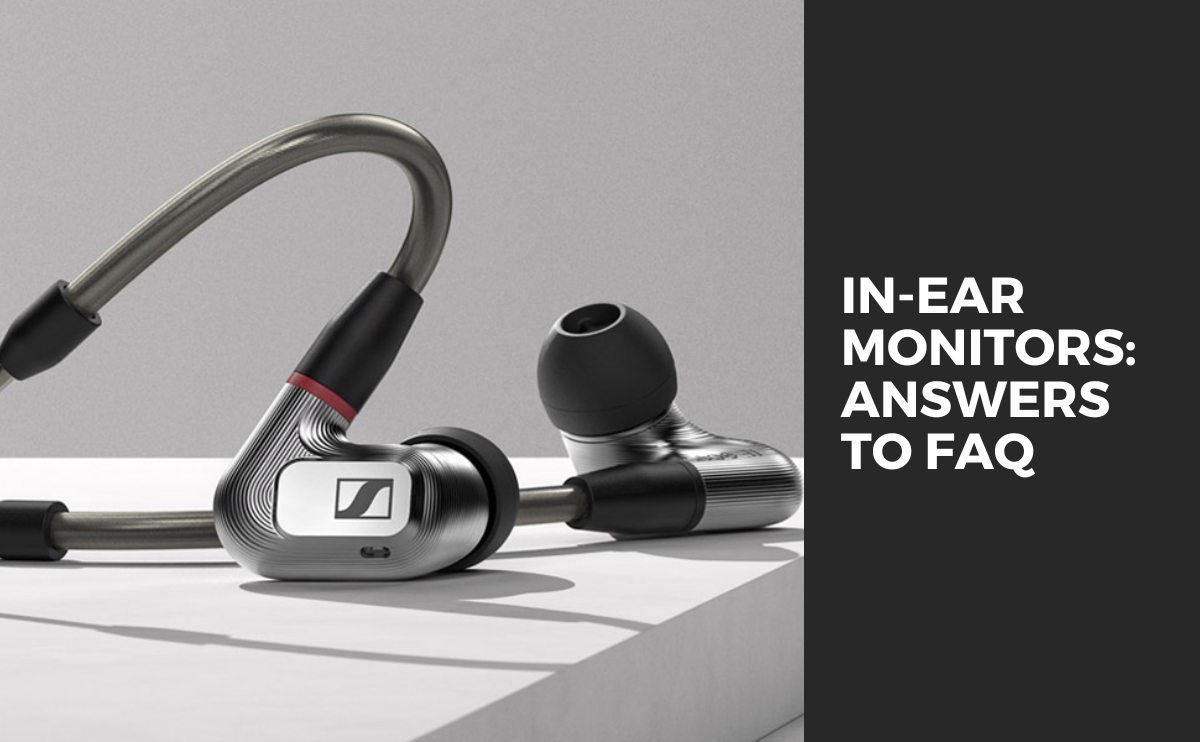




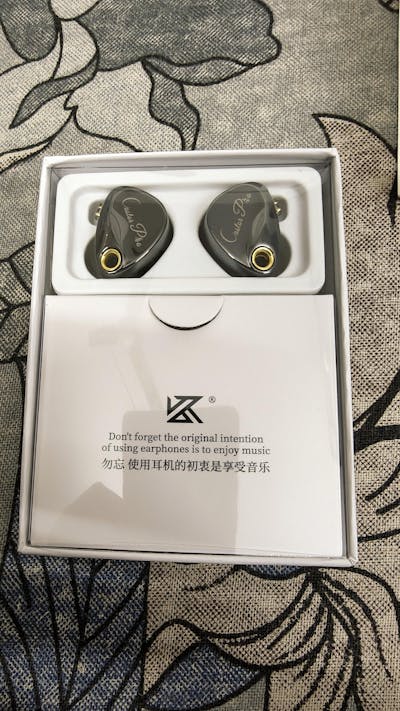
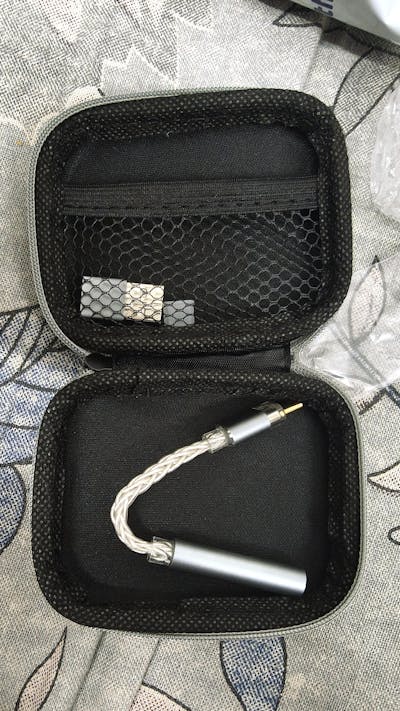
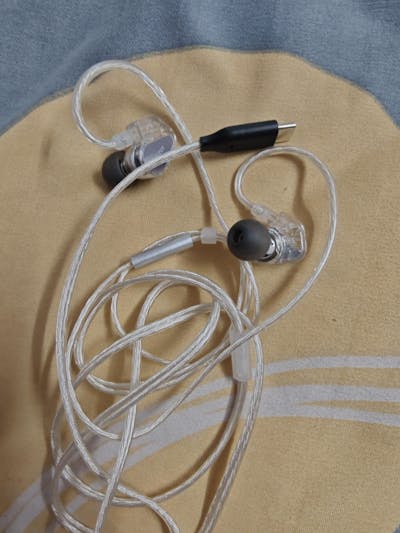

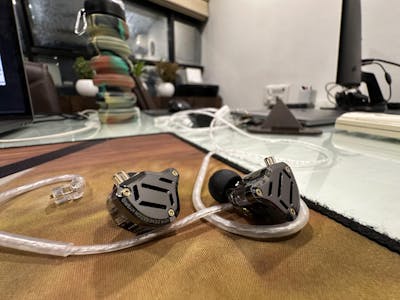
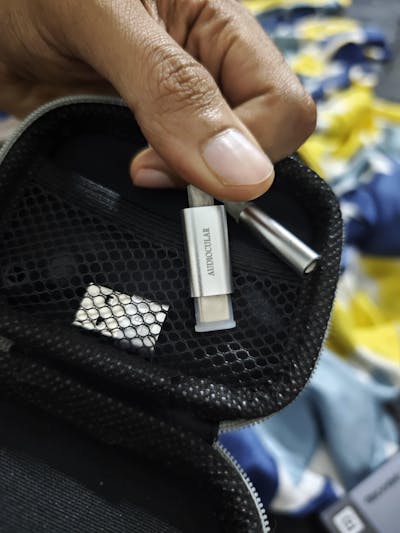


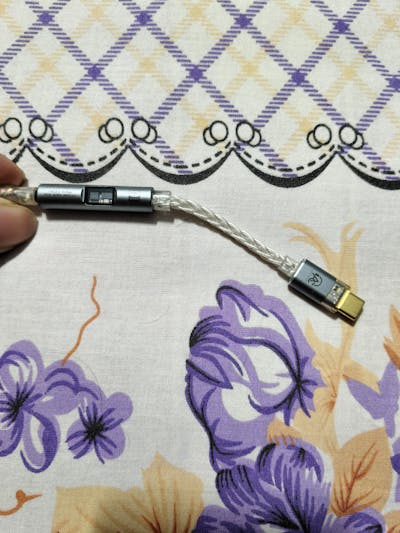
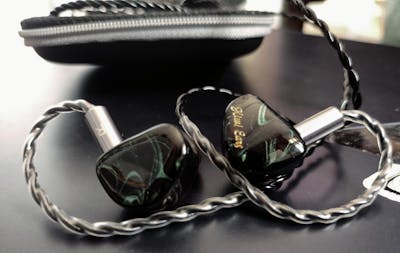

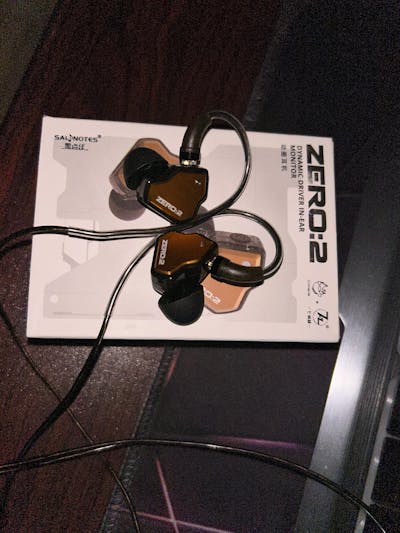

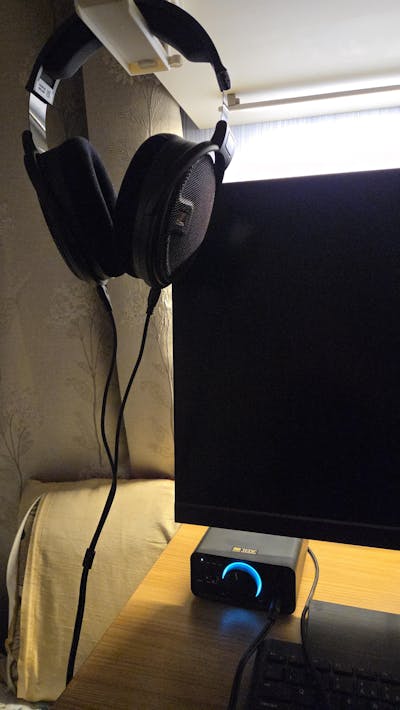

2 comments
Vineet Wadhwani
I don’t hear all these and no bad till. I push the items into my ears. I changed all the tips but it’s the same. B the minute I push them. In all the miss and bad come to how they should be. What do you suggest I do
Vineet Wadhwani
I don’t hear all these and no bad till. I push the items into my ears. I changed all the tips but it’s the same. B the minute I push them. In all the miss and bad come to how they should be. What do you suggest I do